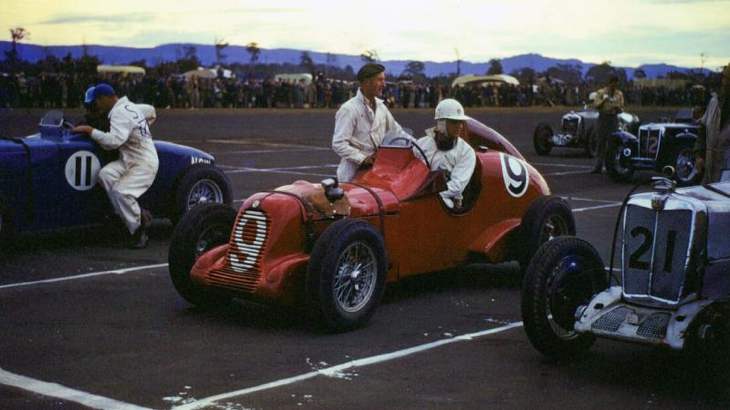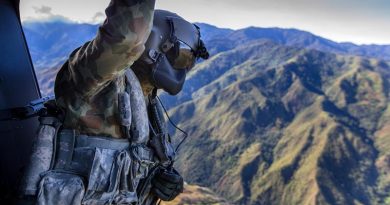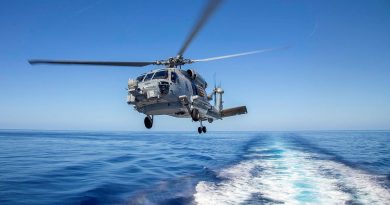Remembering the 1948 Australian Grand Prix

The excitement of a Formula 1 Grand Prix will never change – the roar of engines flashing past at mind-blowing speeds is a sound that stays with you.
CAPTION: Alf Najar in his MG TB Monoposto number nine lines up for a start in the 1948 Australian Grand Prix. Story by Flight Lieutenant Marina Power. Photo by Stanton Najar, sourced from Speedway and Road Race History website.
Flashback to 1948, and our predecessors were probably thinking exactly the same thing, albeit the speeds were a tad slower and the sounds a bit rougher. But that spectacle of a Grand Prix never gets old.
The 1948 Australian Grand Prix held on January 26 was attended by a record crowd of 40,000 spectators.
The race track used the 4km circuit of RAAF Base Point Cook, with Formula 1 cars driving 42 laps through taxiways, around buildings and through the runway as the main straight. The entire race covered a distance of 162km, and of the 26 cars competing, only 10 made it to the finish line.
And who better to race on a RAAF base than an Australian fighter pilot? World War II (WWII) air ace Squadron Leader Tony Gaze (February 3, 1920 – July 29, 2013) competed in the 1948 race, and according to historical references, he was only one of several contestants who raced over a track on which they had also landed on as pilots.
Fast-forward 75 years, and Air Force has continued to support motorsports in Australia and the Formula 1 Grand Prix.
Fittingly, Air Force’s historic squadron, 100 Squadron based at RAAF Base Point Cook, supported this year’s event with a daily flying display by a Supermarine Spitfire Mk.XVI, one of the last three flying Spitfires in Australia.

CAPTION: Flight Lieutenant Scotty Taberner stands with a Supermarine Spitfire Mk.XVI at RAAF Base Point Cook, Victoria. Photo by Leading Aircraftwoman Taylor Anderson.
This was the same type of aircraft that Squadron Leader Gaze flew during WWII, and in which he was credited with 12.5 confirmed victories (11 and 3 shared).
Commanding Officer 100 Squadron Wing Commander Jason Easthope said the squadron had a strong connection to the base and its history.
“100 Squadron has a fabulous connection to our aviation history, from where we’ve come and the amazing aviation journey we have forged,” Wing Commander Easthope said.
“I’m sure that as a fighter pilot, Tony would have thought, what better place to run a high-speed, exhilarating race than at a flying base that sees excitement every day.”
Wing Commander Easthope said racing and aviation has come a long way since 1948.
“The speed, technology, safety focus and of course the ability to watch the race virtually has meant that most Australians know something about Formula 1 – the experience to the viewer, at the track or at home, is so immersive,” he said.
“Flying historic aircraft is quite different to flying modern aircraft. A modern aircraft is systems intensive and, in fighter terms, flown on the edge of its envelope, which is fatiguing for both aeroplane and pilot, but is necessary to win.
“In a warbird like the Spitfire, it is flown ‘gently’, relatively speaking, compared to its original design specification. However, flying the old warbird, you feel very ‘connected’ to the aeroplane; you feel every heartbeat.”
The men who flew the Spitfires and drove WWII-era racing cars were daredevils who were all skill and adrenalin. They were the true masters of the sport, forging with their legacy the legends that continue to fuel the dreams of young pilots and racing car drivers to this day.

CAPTION: Air Force Supermarine Spitfire Mk.XVI attending the Formula 1 Grand Prix held at Albert Park in Melbourne. Photo by Leading Aircraftwoman Taylor Anderson.
.
.

.
.






What are those hills in the background? Definitely not the You Yangs, to close to be the Dandenong Ranges. Is there more than one Point Cook with a RAAF base….and hills?